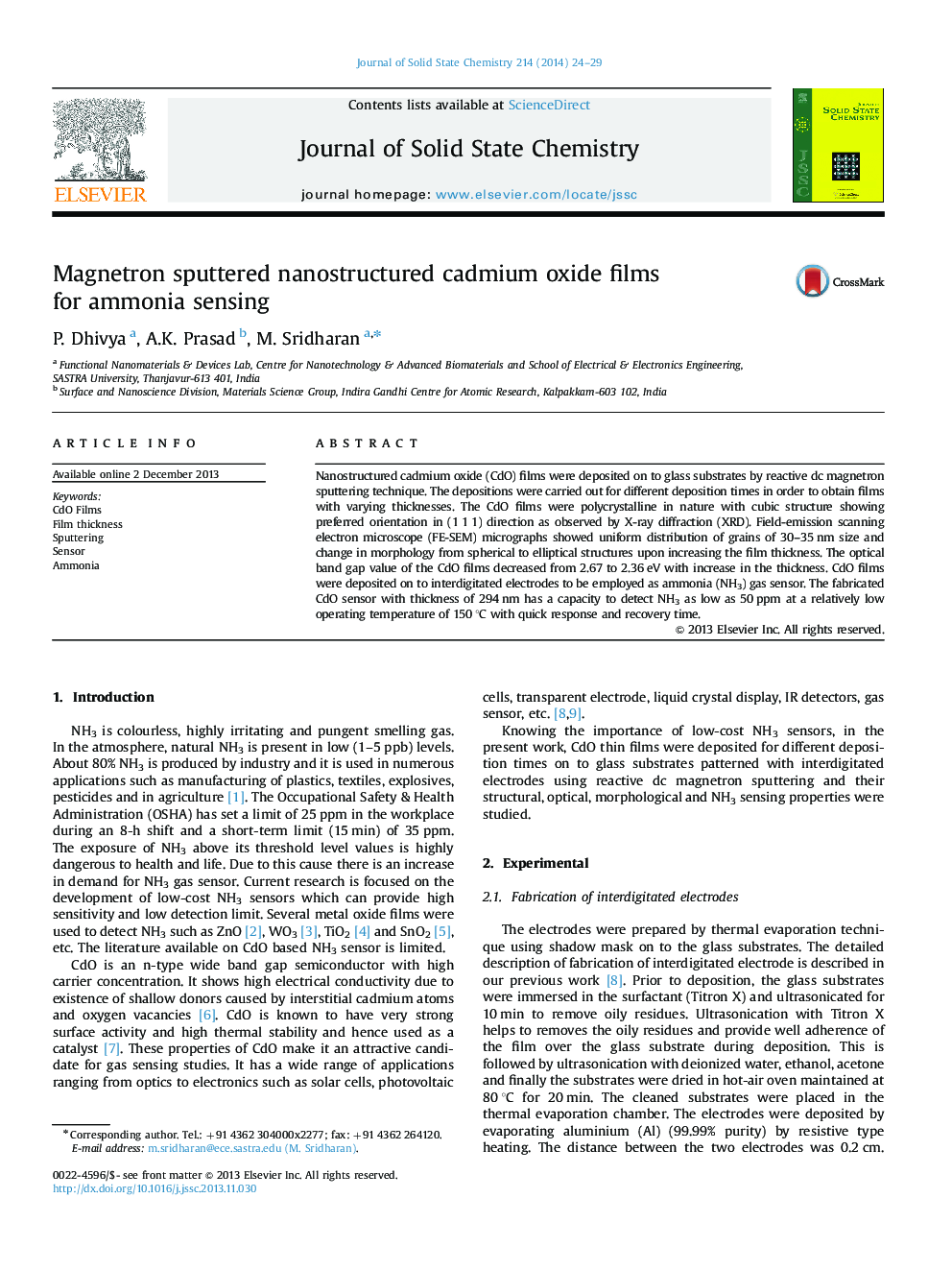| Article ID | Journal | Published Year | Pages | File Type |
|---|---|---|---|---|
| 1329777 | Journal of Solid State Chemistry | 2014 | 6 Pages |
•Nanostructured CdO films were deposited on to glass substrates using magnetron sputtering.•Deposition time was varied in order to obtain films with different thicknesses.•The CdO films were polycrystalline in nature with preferred orientation along (1 1 1) direction.•The optical bandgap values of the films decreased on increasing the thickness of the films.•CdO films with different thickness such as 122, 204, 294 nm was capable to detect NH3 down to 50 ppm at operating temperature of 150 °C.
Nanostructured cadmium oxide (CdO) films were deposited on to glass substrates by reactive dc magnetron sputtering technique. The depositions were carried out for different deposition times in order to obtain films with varying thicknesses. The CdO films were polycrystalline in nature with cubic structure showing preferred orientation in (1 1 1) direction as observed by X-ray diffraction (XRD). Field-emission scanning electron microscope (FE-SEM) micrographs showed uniform distribution of grains of 30–35 nm size and change in morphology from spherical to elliptical structures upon increasing the film thickness. The optical band gap value of the CdO films decreased from 2.67 to 2.36 eV with increase in the thickness. CdO films were deposited on to interdigitated electrodes to be employed as ammonia (NH3) gas sensor. The fabricated CdO sensor with thickness of 294 nm has a capacity to detect NH3 as low as 50 ppm at a relatively low operating temperature of 150 °C with quick response and recovery time.
Graphical abstract.Figure optionsDownload full-size imageDownload as PowerPoint slide
